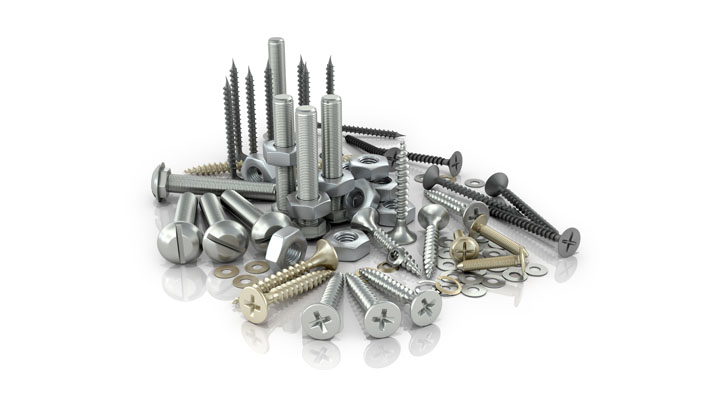After years of underperformance, American manufacturing is back. Industrial companies are enjoying massive bull markets in their shares. While tech has led the way for years, old-economy stocks are starting to play catch-up.
This is all great news for Fastenal Company (NASDAQ:FAST). FAST stock hasn’t gone anywhere for the past five years. But the current American manufacturing revival could change all that.
Before you jump aboard the Fastenal train, however, make sure to consider the risks. The stock is still expensive and sits at technical resistance. And looming competitive threats could ding the company’s margins. Overall, is FAST stock ready to break out or fall back yet again?
FAST Stock Cons
Expensive Stock: FAST stock is currently trading at 28 times earnings. For a company that isn’t in tech or another fast-growth sector, 28x earnings is quite a stretch. Analysts are bullish on Fastenal. The company scored an impressive seven ratings upgrades in 2017 alone.
And yet, despite that, analysts only see Fastenal’s earnings growing by around 10% next year, taking the forward PE ratio to 25. That’s still expensive, even if the bullish analyst forecasts are achieved.
That problem played out with Fastenal’s earnings this week. Despite beating the company’s revenue guidance and matching on EPS, FAST stock slumped after the company released the numbers. It is hard for an unglamorous business to sustain such a huge PE ratio without blowout earnings numbers.
For dividend investors, FAST stock is attractive due to its consistently rising dividend payout. However, at a 2.8% yield now, Fastenal doesn’t pay much more than U.S. treasury bonds. With interest rates soaring, the conservative yield-focused investors that previously bought stocks like FAST for safety may jump ship for safer options in fixed income.
Declining Margins: Fastenal’s profit margins have slid in recent quarters. The market has interpreted this as a sign that Amazon.com, Inc. (NASDAQ:AMZN) and other online players are eroding Fastenal’s core business. Fastenal’s bread-and-butter business is distribution. Amazon makes its living upending existing distribution models.
On top of that, Fastenal’s expansion in the vending and on-site businesses will further cut into its margins, as it can’t mark up these services as much as its traditional offerings. Fastenal is evolving to stay relevant as times change. But the change in the company’s business focus could cause earnings growth to slow down.
Technical Resistance: FAST stock just hit the $55 level that was its all-time high dating back to 2012. At that point, shares sold off smartly following a so-so earnings report.
This will give short sellers ammunition to press their bets against Fastenal. Already, short sellers have sold 9% of FAST stock short. That’s an unusually high amount for an industrial company. In many cases, high short interest might be fuel for a potential short squeeze.
In this situation, however, the short sellers could be problematic. The stock just failed at overhead resistance, and shorts will feel emboldened to press their bets.
FAST Stock Pros
Internet Threat Is Overstated: The declining margins argument by the bears may or may not be correct. Here’s the bullish counterpoint. Throughout 2017, Amazon fears spread into many sectors, such as grocery and auto parts, that had previously seemed resistant to the internet threat.
To give one example, AutoZone, Inc. (NYSE:AZO) plunged from $800 to $500 in 2017, before roaring back to $780 now.
You can make a similar case that investors are not understanding Fastenal’s true position. Sure, the internet could disrupt FAST’s traditional distribution business. However, customers are pretty sticky for its services.
For niche specialized products, it makes less sense to abandon trusted vendors to save a few cents. And Fastenal’s on-site and vending businesses are largely internet-immune, even if the older store model takes a hit.
Cheaper Than Before: It’s inarguable that FAST is an expensive stock. However, bulls can rightfully retort that it is cheaper than it used to be. Incredibly, between 2009 and 2013, FAST stock ended every single year with a trailing PE ratio over 30. And recently, its PE ratio has consistently hung out in the high 20s.
In fact, FAST stock first hit $55 way back in 2012 and has pretty much traded in a steady range between $45 and $55 for the past five years. Thus, despite being expensive, it’s relatively cheap compared to its recent history. Also, when it finally breaks out above that long-running resistance at the $55 mark, it could really get going technically.
Sector Is Booming: The industrial stocks are on fire right now. Boeing Co (NYSE:BA), not usually a highflier, is giving the FAANG stocks a run for their money. BA stock is up 115% over the past year.
Caterpillar Inc. (NYSE:CAT) is having a similar performance. Left for dead in early 2016, CAT stock has pulled off more than just a bounce. It’s nearly tripled off the 2016 low and is up 90% within the past 12 months.
It’s not hard to see why investors are excited. The president’s efforts to create American manufacturing jobs are a boon for the industrial sector. And the tax cut package and a potential deal for infrastructure spending could stimulate yet more demand for the products that Fastenal distributes.
Verdict on FAST Stock
This an exciting moment for Fastenal stock. After five years of stagnation, shares are pushing up against long-running resistance at $55. If it tops that, shares should soar.
However, don’t expect it to happen this quarter. The company’s latest earnings report wasn’t good enough to get the job done. If anything, expect short sellers to circle the wagons here as the company’s margins drop off and Amazon fears persist. There could be a good trade coming up on FAST stock in 2018, but it isn’t here just yet.
At the time of this writing, the author owned AZO stock. He had no positions in any of the other aforementioned securities. You can reach him on Twitter at @irbezek.

